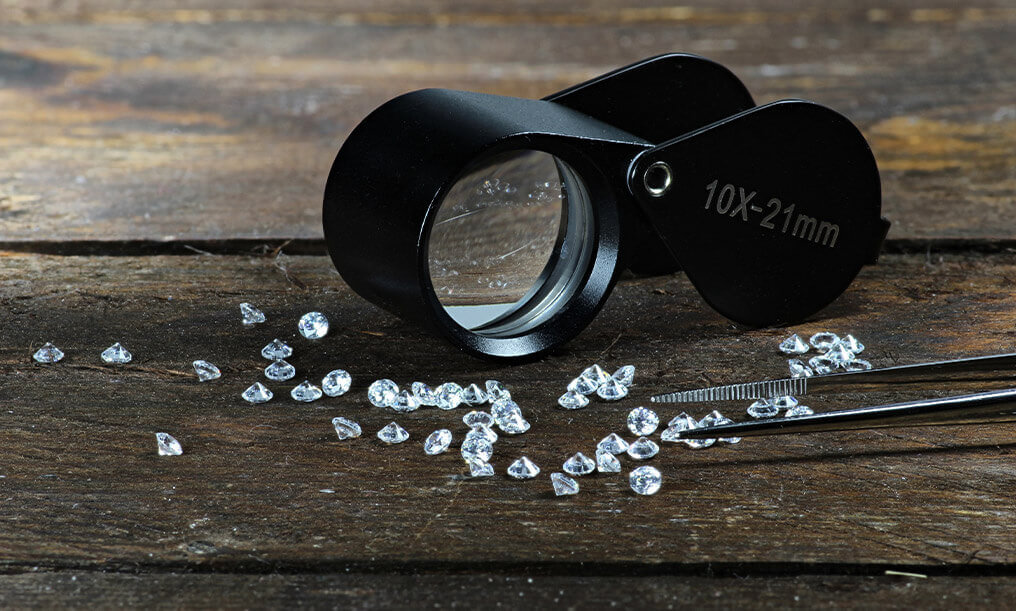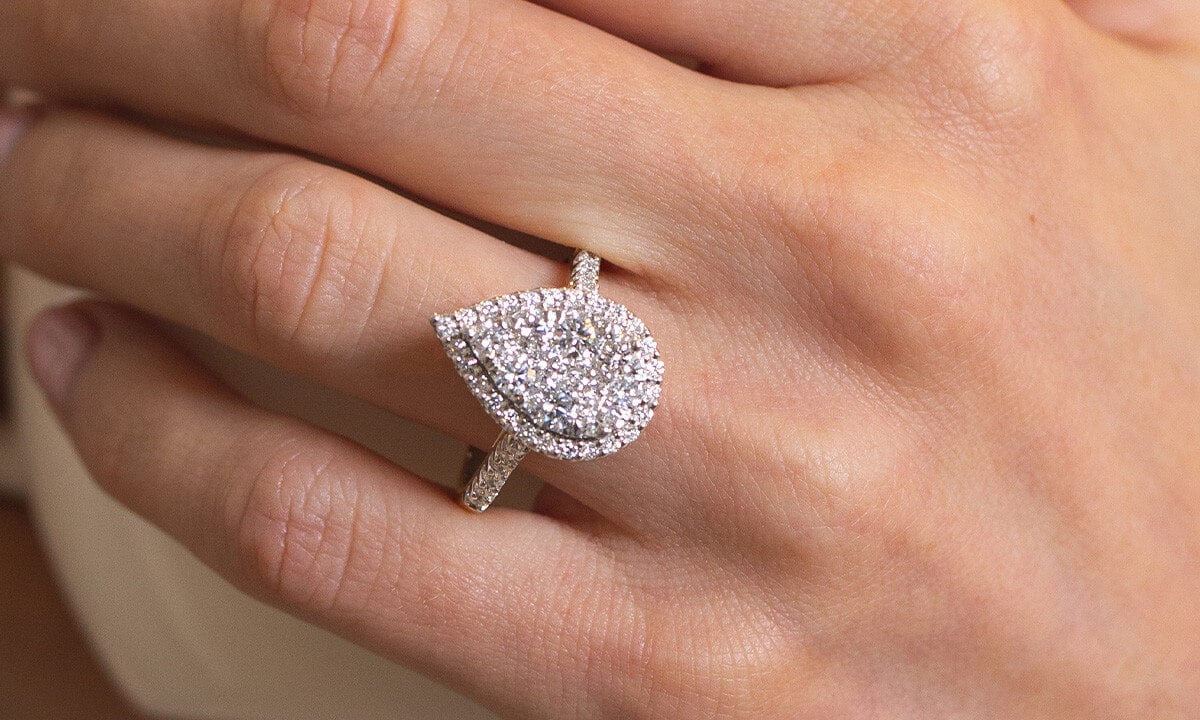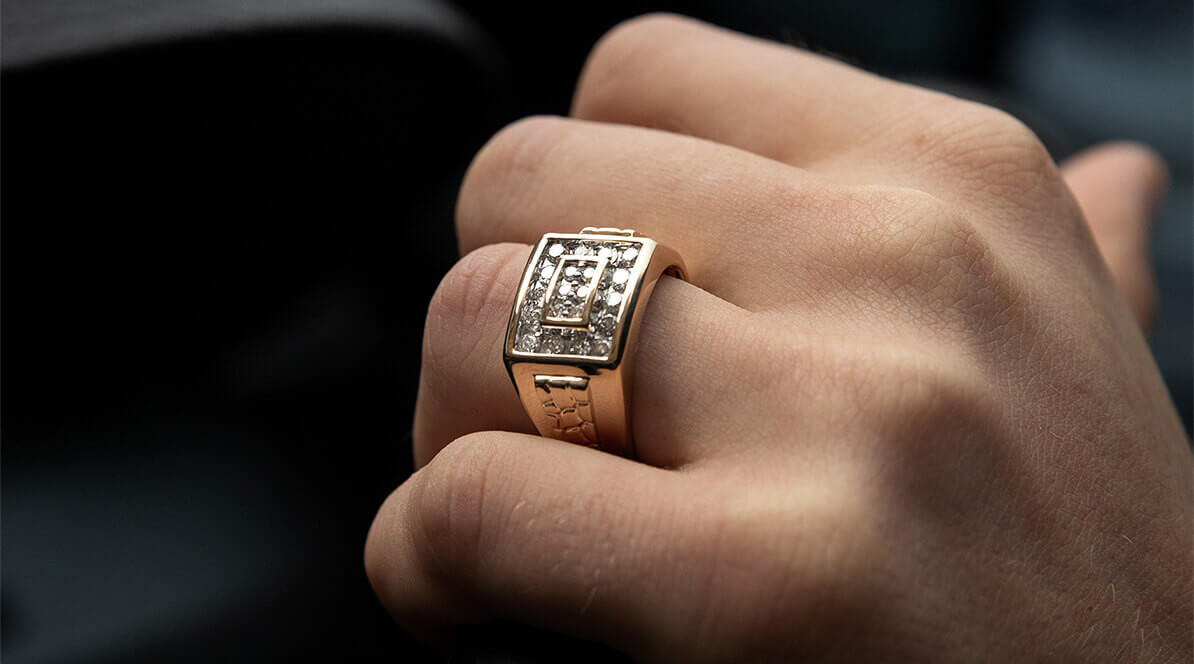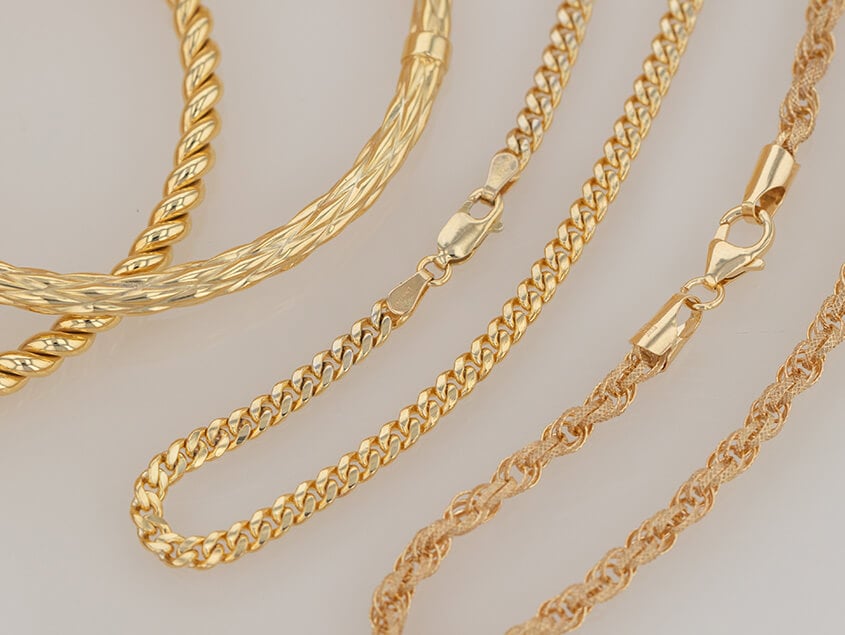Lab-grown diamonds also known as man-made diamonds have quickly gained momentum among fine jewellery lovers. Look into the glass cabinet at any jeweller and you'll likely find these exquisite stones in everything from diamond earrings and necklaces to diamond engagement rings.
But what does lab-grown diamond mean exactly? Are they real diamonds? Do lab technicians engage in some kind of mad science mixing all kinds of lotions and potions to get these enigmatic stones to form?
Read on to find out and to learn the answers to other frequently asked questions about lab-grown diamonds.
Overview:
- What does lab grown diamond mean?
- Are lab grown diamonds real diamonds?
- How are lab grown diamonds made?
- Are they really more affordable?
- Are lab grown diamonds ethical & eco-friendly?
- Are lab grown diamonds easy to maintain?
- Lab-grown diamonds vs real diamonds
What Does Lab Grown Diamond Mean?
A lab-grown diamond essentially means that the stone was not produced in the same manner that a traditional diamond would typically be produced. Traditional diamonds form deep within the earth's crust after carbon atoms are exposed to high pressure and temperatures and begin to crystallize.
They are then retrieved by diamond miners who venture deep within the earth's surface to source one of these precious stones. Lab-grown diamonds, on the other hand, are created in the controlled confines of a laboratory by a special diamond technician. This makes it easier for a jeweller to control the quality and the kind of hues that coloured diamonds produce.
Are Lab Grown Diamonds Real Diamonds?
They certainly look and feel like real diamonds, but are lab-grown diamonds the real deal? The answer is yes. Lab-grown diamonds share all of the same physical components as natural diamonds and are produced in somewhat similar conditions.
Not only is a lab-grown diamond's quality measured with the four C's; cut, colour, carat and clarity, but they are also polished into the same shape as mined diamonds. Lab-grown diamonds shouldn't be confused with simulated diamonds, better known as Cubic zirconia or Moissanite.
These stones, though they may contain naturally occurring minerals, share none of the same physical properties as real diamonds. Simulated diamonds are also a lot weaker than the real thing with Zirconia and Moissanite ranking around 8th or 9th Mohs Scale of Hardness while diamonds, which are known for their extreme durability rank 10th.
How Are Lab Grown Diamonds Made?
There are two ways in which a lab-grown diamond is produced. The first is through a method known as High Pressure, High Temperature (HPHT) and the other is developed through a procedure known as Chemical Vapor Deposition (CVD). Both methods involve cutting up a smaller slither of a diamond, often referred to as a diamond seed and take around a month to produce.
High Pressure, High Temperature (HPHT)
High pressure, high temperature is a pretty self-explanatory method of producing a lab-grown diamond. Essentially, the diamond seed is placed into a large piece of carbon and then is put into a machine like a belt press which mimics the conditions that a natural diamond is formed.
The extreme heat and pressure will then melt away the carbon, exposing a diamond shape. The result is a diamond that may not necessarily be as good of quality as a natural diamond (hence their lower price point), but still a beautiful stone otherwise.
Chemical Vapor Deposition (CVD)
One of the more recent methods used to produce lab-grown diamonds, chemical vapor deposition involves placing a diamond seed into a small sealed chamber and then exposing it to extremely high temperatures as well as carbon-rich gases such as hydrogen or methane. These gases are then ionised and melted into plasma using technology that is similar to what is used to generate magnetic waves in microwaves.
This breaks down the molecular structure of the gases, allowing the carbon to stick to the seed, forming a diamond. A lot of precision and detail goes into creating these stones, something that is evident in their quality and appearance, hence why CVD lab-created diamonds tend to be more expensive than the HPHT variety. CVD is the method primarily used to create Grahams' Luminesce lab-grown diamonds.
Are They Really More Affordable?
Perhaps the only downside to diamonds is their price point. Because naturally, something as exceptionally rare as a diamond doesn't come cheap. And while it is mainly determined by the diamond's four C's; cut, colour, carat, and clarity, some stones can fetch as little as $150 while others can range into the millions.
Lab-grown diamonds on the other hand, while they do still carry a hefty price tag, it is estimated that they're around 30% cheaper than their natural counterparts. This is because there is a lot more manpower and equipment required to source natural diamonds compared to the man-made variety. Natural diamonds are also a lot more scarce.
Because lab-grown diamonds are a lot more affordable than natural diamonds, they are a popular choice among frugal couples looking to save a little when purchasing engagement and wedding rings, as well as those who just feel like treating themselves with diamonds.
Are Lab Grown Diamonds Ethical And Eco-Friendly?
Now more than ever, women are embracing lab-grown diamonds not just for their lower price point, but because they can be a lot more ethical than natural diamonds. If you've ever seen the Leonardo DiCaprio film Blood Diamond then you'll be aware that some naturally mined diamonds can come with a fair amount of baggage.
In some countries, the diamond trade has been linked to slavery and child labour and has even become a source of major conflict. Diamonds linked to these shady practices are often referred to as 'blood diamonds. Lab-grown diamonds do not carry this ethical baggage as they are created in the confines of a laboratory and therefore there is a lot more transparency in their production chain.
The energy used to retrieve naturally mined diamonds is also immense, and the heavy-duty machinery used can often leave a lasting impact on the environment. And while lab-grown diamonds do require a great deal of energy to be created, it's nothing compared to what goes into mining diamonds. This makes lab-grown diamonds a more eco-friendly solution that many environmentally conscious fine jewellery lovers are embracing with open arms.
Are Lab Grown Diamonds Easy To Maintain?
One of the toughest minerals on earth, natural diamonds are lauded for their durability and tough exterior, and so are lab-grown diamonds-making them super easy to maintain. Having been created from the same chemical compounds as mined diamonds, lab-grown diamonds rank in the same position on the Mohs Scale of Hardness as their natural counterparts and therefore are built to withstand even the toughest blows that everyday life throws at it. This means that lab-grown diamonds are also fairly easy to keep clean and can be done so at home with a little dish soap and warm water.
Lab-Grown Diamonds VS Real Diamonds
Aside from their price tag and the method in which both stones are produced, there aren't too many major differences between naturally mined and lab-grown diamonds. You could literally place both stones next to each other and you wouldn't be able to tell them apart without any magnifying equipment.
This is why lab-grown diamonds are proving to be a popular choice among those who are keen to save a little bit of money or want to ensure their sparkle comes with a bit more transparency. Though they may not hold the same level of opulence and grandeur as the naturally mined variety, lab-grown diamonds still bring the luxe factor and provide a sophisticated look that will stand the test of time.
Learn more about Grahams' exquisite range of Luminesce Lab-Grown Diamonds by stopping by one of our five store locations or by browsing online. Sparkle now and pay later by checking out with one of our various finance options on offer through Afterpay, Zip, humm and more.
More About Diamonds:
- Diamond Guide
- Diamond Price Guide
- Diamond Style Guide
- Diamond Buying Guide
- Diamond Cleaning Guide
- Engagement Ring Guide
- Diamond Jewellery Brands
- Diamond Earrings Buying Guide
- How To Store Diamond Jewellery
- What To Know About Diamonds Before Buying A Ring
- How To Buy A Diamond Ring Without Getting Duped


.png)










